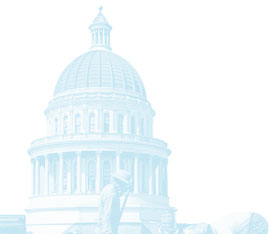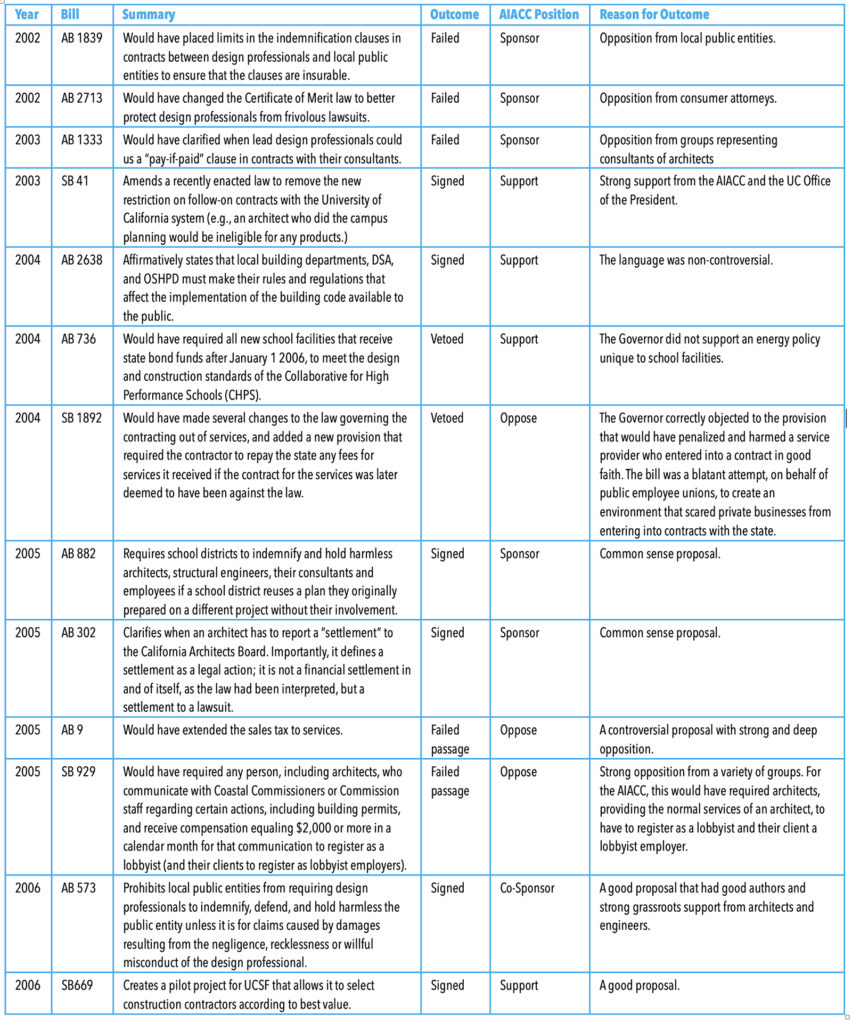
Three items will serve to give a sense of the range of approaches that advocacy efforts may take.
SB 1312 (2008), authored by Senator Leland Yee (Democrat, District 8) offers an instructive study in the ways that proposed legislation may affect different segments of the same professional population in significantly different ways. This bill would have established an interior design practice act. It was supported by the American Society of Interior Designers (ASID) and the Interior Design Coalition of California (IDCC). Yet the interior design profession as a whole was not unified in support. The National Kitchen and Bath Association (NKBA) opposed the legislation, as did interior designers and decorators who are not affiliated with ASID. Carrying the most weight in the opposition were California Community Colleges, whose graduates do not typically pursue the same path as graduates of four-year interior design programs. While representatives of the AIACC met with Senator Yee to present the case that the proposed legislation was based on false premises, their voice alone was insufficient to sway the senator. Rather, it was the big coalition of opponents, working together, which assured that the legislation could not pass and thus convinced Senator Yee to withdraw it.
The Independent Contractor Withholding proposal (2010) would have required businesses that hire consultants in 1099 transactions to submit a 3% withholding of the contract fee to the Franchise Tax Board. For professionals like architects, who pass fees through to sub-consultants, the withholding would have been duplicated, with 3% submitted to the FTB by the client and another 3% by the architect. Additionally, the architect would have more than 3% of his/her fees withheld because the proposal did not account for pass-through fees. Conceived as a response to the state’s budget crisis, the proposal would not have generated any new revenue; rather, it would simply have brought some of the next year’s revenue into the current budget year. It was effectively a cash-flow gimmick, which would have transferred the state’s cash-flow problems to individual businesses. Here, again, the AIACC was a part of a large coalition that met with many legislators to speak against this proposal. At one meeting, with the staff of a legislator supporting this proposal, AIACC staff mentioned how this proposal would have a disparate effect on architects, because the proposal did not take into account pass through fees. The staffer’s response: “You know as well as I do that any new proposal is going to have some losers.” Nevertheless, the coalition of which AIACC was a part was able to educate enough legislators of the harm this budget gimmick would have had on the business community, that the proposal was dropped.
Each of the previous two examples involved the AIACC working with a broad coalition and mustering opposition in the face of a determined sponsor of the bill. It is not always like that, however. SB 1605 (2008), proposed by the late Senator Dave Cox (Republican, District 1), would have created a program of stock plans for public schools. The AIACC brought together a group of several architects, both Republicans and Democrats, to meet with the senator. The architects, who included former state architect Stephan Castellanos, FAIA, Brian Wiese, AIA, and Steve Newsom, AIA, accompanied by AIACC Director of Legislative Affairs Mark Christian, Hon. AIACC, and contract lobbyist Ralph Simoni, Hon. AIACC, met with Senator Cox for forty minutes. They presented a reasonable argument against the application of standardized plans in school design. The senator asked good questions. An hour after their departure, AIACC staff received a call from the senator’s office, saying that the bill had been dropped. Such is an example of the most felicitous situation: an ill-conceived bill stopped before it went forward, on policy grounds rather than politics. The architects took their valuable time to go to the capitol—paid for their own parking. Such involvement can result in significant benefits to the profession and to the public. The AIACC welcomes members’ participation in future efforts.
Originally published 1st quarter 2011, in arcCA 11.1, “Valuing the AIA.”






